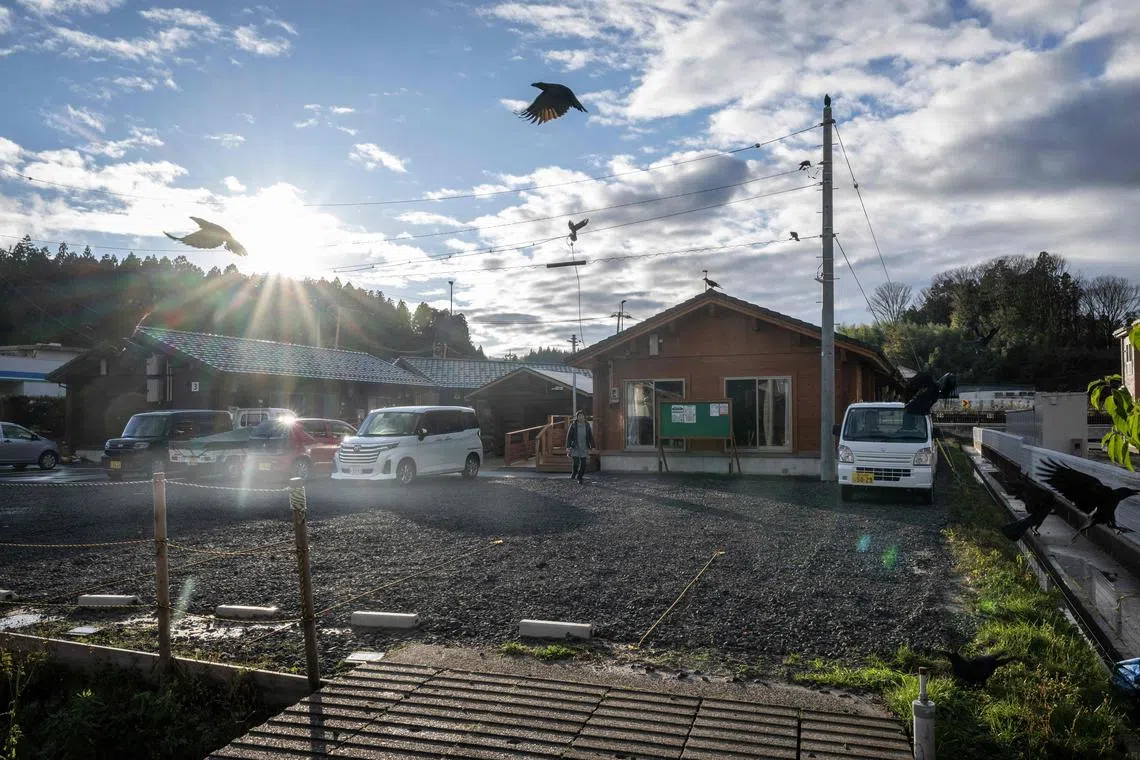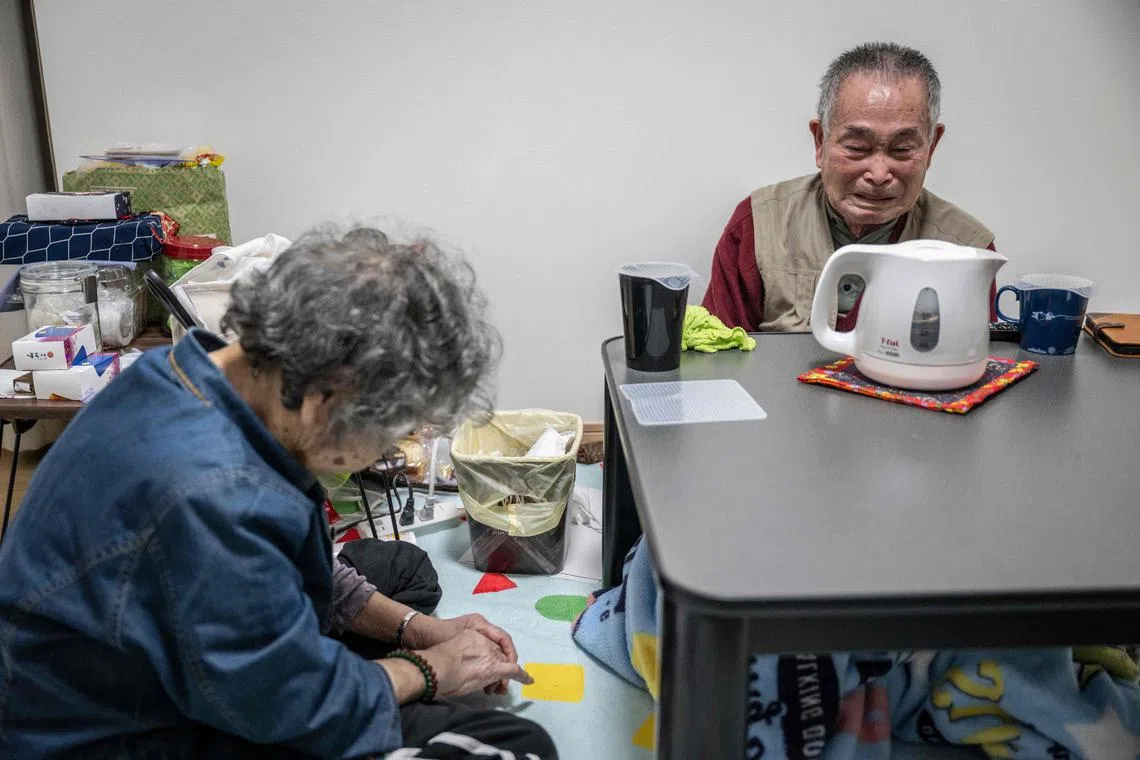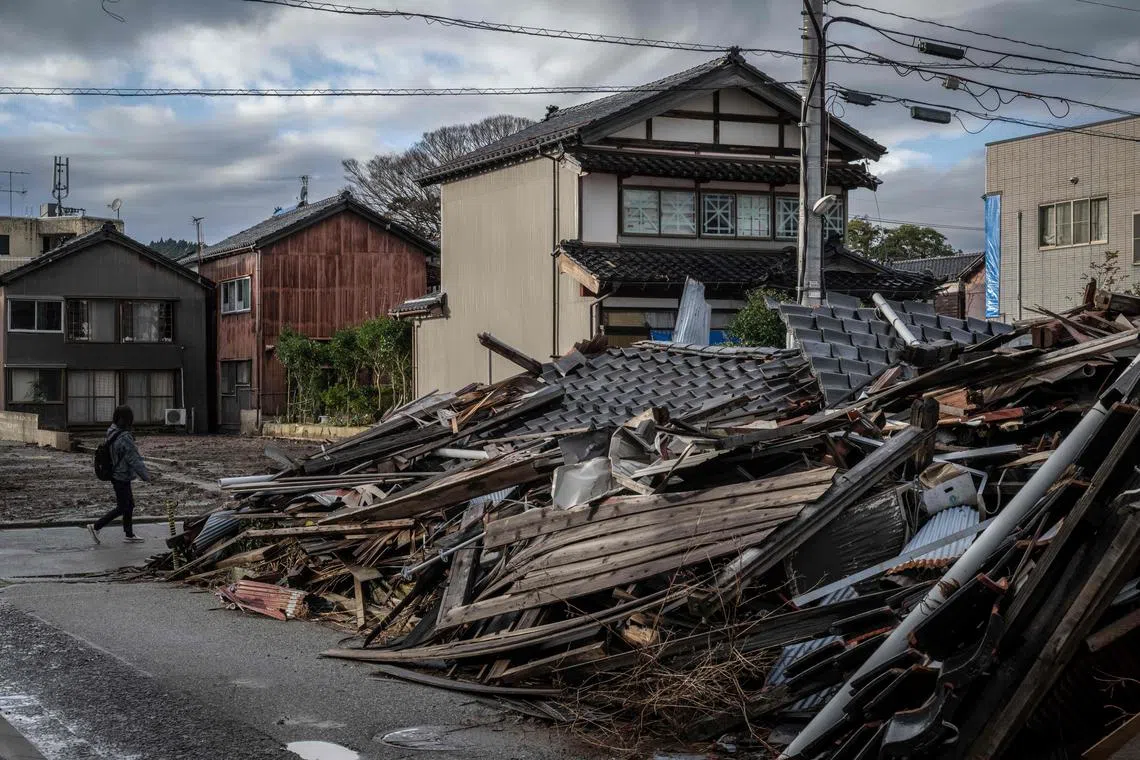A fearful New Year in temporary homes after Japan quake
Sign up now: Get insights on Asia's fast-moving developments

More than 200 people still live in shared emergency shelters, while thousands of others are in accommodation units meant as a stopgap solution.
PHOTO: AFP
Follow topic:
WAJIMA, Japan – Before the earthquake changed everything, 83-year-old Sueko Naka from Japan’s remote Noto Peninsula wished to live out her life at home, watched over by an altar to her ancestors.
But a year after a 7.5-magnitude quake and its aftershocks devastated the region
“When I imagine I might die here, I can’t sleep well,” Madam Naka told AFP among her minimal belongings in the newly built dwelling in the city of Wajima.
“I guess I have to accept reality. We have a place to stay,” she said.
The earthquake on New Year’s Day 2024 was Japan’s deadliest in over a decade, claiming nearly 470 lives.
Around half the victims were killed in the disaster itself, which brought tsunami waves and sparked a huge fire in Wajima’s city centre, burning down a historic market.
The rest perished later, as hundreds of aftershocks and cold weather compounded stress for survivors, including 40,000 people – many elderly – evacuated to shelters in school gyms and community centres.
A year later, the Ishikawa region still quivers with aftershocks, stoking fears of another huge jolt.
Unprecedented rainfall in September also unleashed severe flooding in Noto, resulting in another 16 deaths.
Today, more than 200 people still live in shared emergency shelters, while thousands of others like Madam Naka are in accommodation units meant as a stopgap solution.
Even in the world’s fourth-biggest economy, reconstruction has been slow, with only a quarter of Wajima’s heavily damaged buildings demolished so far.

The interior of a damaged house in Wajima city, Ishikawa prefecture, after the major earthquake on New Year’s Day 2024.
PHOTO: AFP
The quake ripped up roads and triggered landslides, making it difficult for heavy equipment to traverse the rural peninsula on the Sea of Japan (East Sea) coast.
Its most remote parts give the impression of a large construction site dotted with empty homes, some at slanted angles.
An army of demolition crews operates heavy trucks on pavements warped into wavy, uneven surfaces, but locals say much more is still needed to clear the destruction.
After the earthquake “we received various forms of external support, and there was an emerging sense that everyone was going to start over”, Wajima city official Yasuaki Ipponmatsu told AFP.
“But the torrential rain swept away everything, and people had to go back to square one,” he said. “That was very difficult.”

Mr Kozo Naka (right) crying as his wife Sueko looks down during an interview with AFP at their temporary housing unit in Wajima city, Ishikawa prefecture.
PHOTO: AFP
New Year is an important period of rest for Japanese families, so when the strongest of several quakes hit on the afternoon of Jan 1, 2024, Madam Naka was at home with her husband.
Its force knocked them to the floor as the foundations of their house dropped half a metre.
“A big roar came from the house next door. Their house crashed down on ours, leaning on it,” Madam Naka recounted. “I thought, ‘This cannot be’.”
The couple’s family home was among the newer structures in their Wajima neighbourhood, built after a 6.9-magnitude earthquake in 2007 destroyed their last house.
“When I remember what happened, I can only cry,” Madam Naka said.
The quake significantly damaged more than 100,000 buildings and completely destroyed over 6,000 buildings across the region of Ishikawa.

A worker carrying reconstruction material outside a collapsed house in Suzu city, Ishikawa prefecture, following the major earthquake on New Year’s Day 2024.
PHOTO: AFP
‘Straight for extinction’
The disasters and slow recovery have prompted many Noto Peninsula residents to start new lives elsewhere, aggravating an existing depopulation crisis as Japan’s citizenry ages.
Around 21,000 people now live in Wajima, 2,500 fewer than in 2023. A decade ago the city was home to nearly 30,000.
“Would they decide to build new homes and return? I think it will be hard,” said Mr Chugo Maruyama, who helps operate a large evacuation shelter in Suzu city, next to Wajima.
“I think our town could be headed straight for extinction,” the 70-year-old added.
The community was exploring ways to encourage young people to stay and rebuild, but the challenges are daunting, with rice fields ruptured and filled with sediment, and ports and irrigation canals damaged.
The disaster has also scattered Madam Naka’s family. She and her husband shared their home with their son-in-law and three grandchildren, but they now live elsewhere.
Their 53-year-old daughter, Ms Miyuki Kijima, moved back to Wajima to look after the elderly couple.
When Ms Kijima thinks of the repeated disasters the Noto Peninsula has suffered, she asks: “Why only Wajima, why again?”

A collapsed house seen in Wajima city, Ishikawa prefecture.
PHOTO: AFP
“We want to repair our home and live there again, but what if it happens again after we repair it?” she said.
For Ms Kijima, the New Year is now “only scary”.
“All I want is for the seven of us to spend our lives together,” she said. AFP

